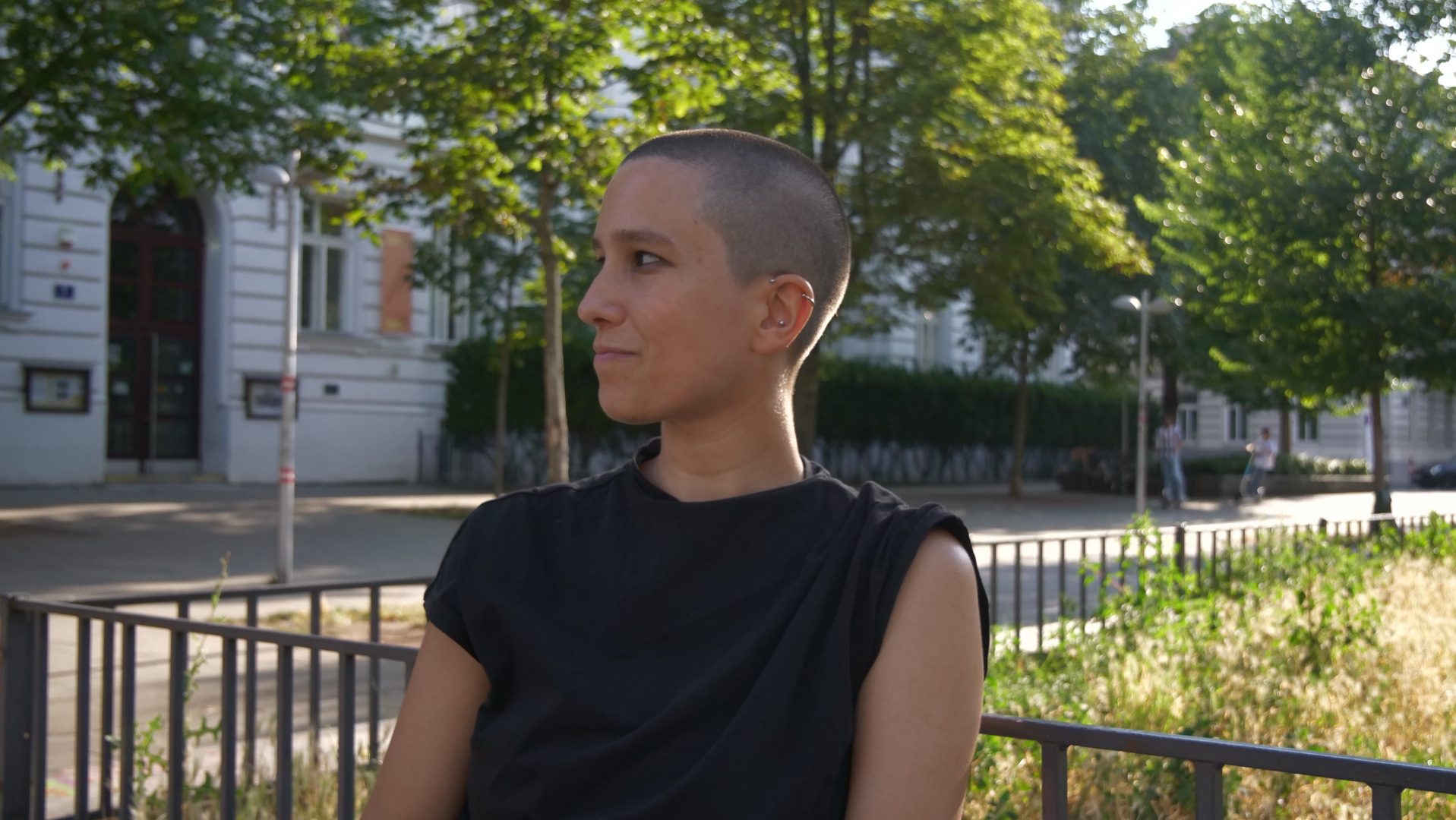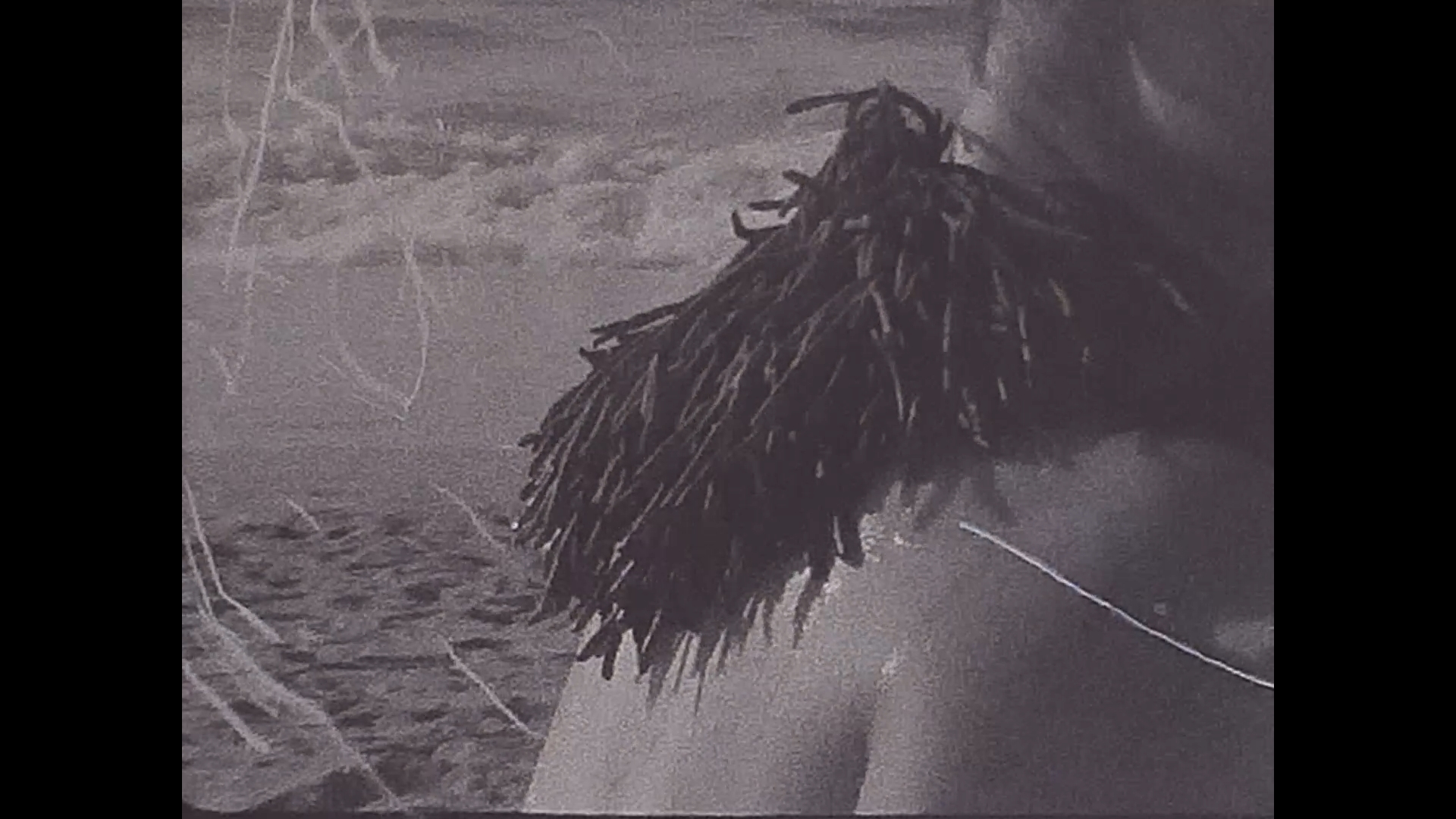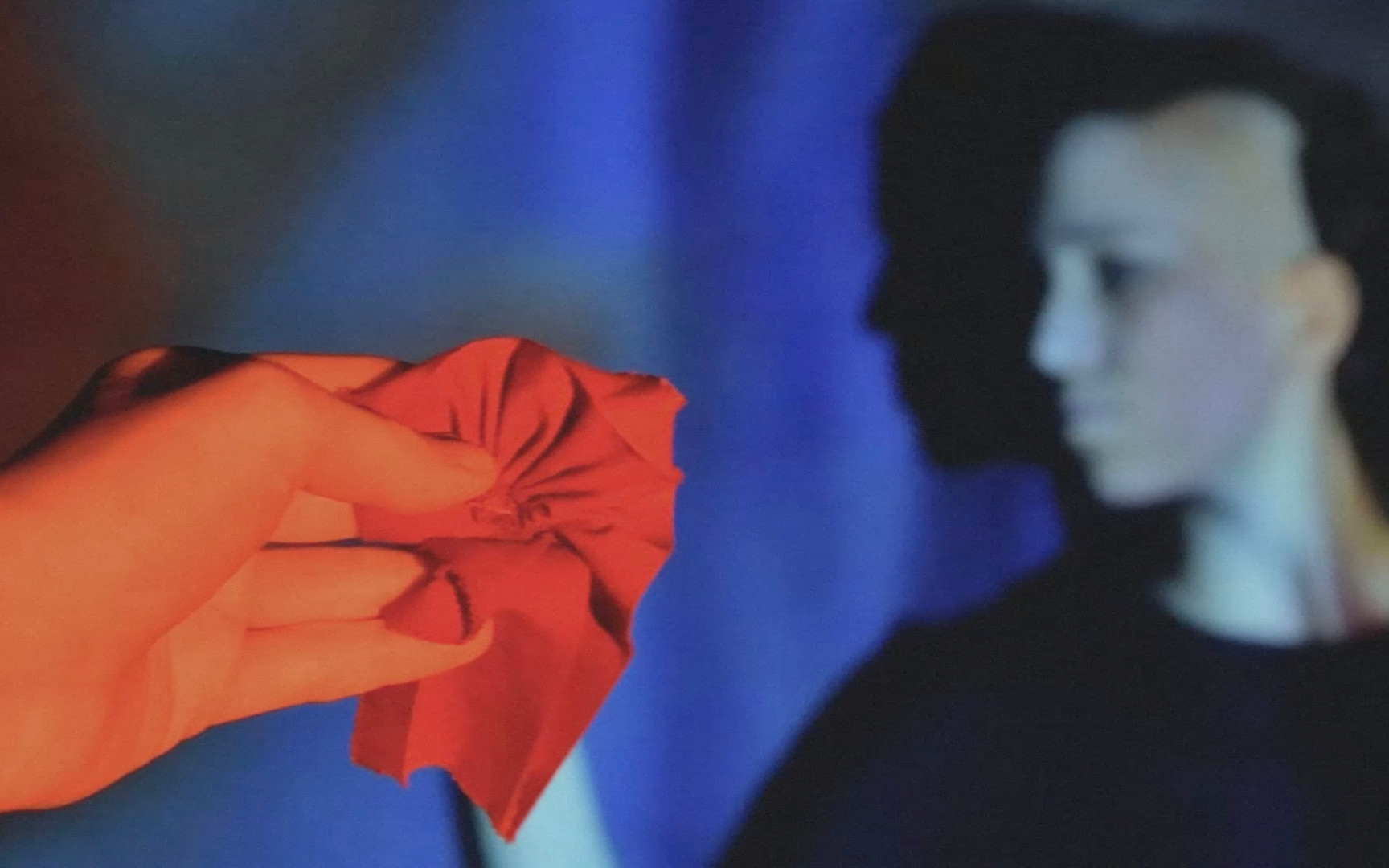Meet Eszter Katalin | Artist & Filmmaker

We had the good fortune of connecting with Eszter Katalin and we’ve shared our conversation below.
Hi Eszter, how do you think about risk?
Risk taking has since always played an important aspect in my artistic career insofar, as it is something that comes with the art field and its precarity, competitiveness and job uncertainty, so I think that it is something which is part of the structure of the art world itself, unfortunately. You never really know beforehand whether a funding application for a new piece will be successful or not, so you always undertake an existential risk in the effort of applying for support in realizing a project. Also when it comes to the creation process, I believe that risk taking is part of one’s artistic journey. In my experience one always exposes one part of oneself in an artwork and this vulnerability does require a lot of courage and never ceases to be part of following your vision.

Let’s talk shop? Tell us more about your career, what can you share with our community?
It took me some time to find my own artistic language as I studied first art history in Vienna, the city I grew up in, and then painting at the Hungarian University of Fine Arts. However, due to the fact that the university in Budapest was very conservative I decided to switch to study Master in Critical Studies at the Academy of Fine Arts in Vienna. I finished this program in 2018. During my years of study I started to increasingly work with video, as it allowed me to combine text and image with each other and explore the complex relationship between these two elements in time based media. In this period I began to work with essay film as a format and until today it is my preferred medium. My graduation film “Mária Vörösben/Mary in Red” deals with the history of the prison of Márianosztra, which was the first prison for female inmates in Hungary and a place ran by nuns, where many communist and antifascist women were incarcerated in the 1920s, 30s and 40s. I came across the history of this prison in 2016, since in 2015 the Hungarian government started to let the inmates of this place produce barbed wire for Hungary’s borders. This film was presented in various film festivals and helped me start my career internationally.
In 2019 I was awarded a residency in San Sebastián-Donostia at “Tabakalera. International Centre of Contemporary Culture” and this is how I got connected to the Basque artistic context. I produced a four channel video-installation with Alazne Lastra and Camil Téllez during this residency and I got to know fellow artist in resident Maja Hodošček, who invited me to realize my first solo show in Likovni salon gallery in Celje, Slovenia, in 2021. In 2020 I was granted a residency in Bilbao at BilbaoArte Foundation, where I created the visual essay “Azkorri árnyéka alatt”, which won the Sunset Kino Award of the Salzburger Kunstverein in 2021 and through which I got into the circuit of international film festivals. This work was of big importance for me, as I first openly positioned myself as a lesbian in my first language Hungarian. Between 2020 and 2022 I started to collaborate with Camil Téllez in their project “Transición primaveral”, a mini-series consisting of 13 chapters which rethinks the figure of the vampire from a queer-feminist perspective. In 2023 and 2024 in collaboration with Histeria Kolektiboa I created “Queer (Un)Belongings”, a film in two parts with migrant LGBTQ+ artists and cultural workers based in the Basque Country, which was presented in Zinegoak LGBTQ+ Film Festival in Bilbao. The same year I received a scholarship from the Austrian government to create the film essay “The Many Ways to Avert One’s Eyes”, a research project I have been working on for many years, focusing on the entanglement of the camera as a gaze dispositive with fascism and authoritarianism. I am very proud of this work and happy that it is distributed by sixpackfilm in Vienna. During this latter project I started to work with Super 8 and it made me fall in love with the world of photochemical film. I started to get interested in ecological forms of processing Super 8 film with the help of plants and seaweed. In 2024 I founded together with Camil Téllez the duo “Drága Cardo” and we started to explore more profoundly the possibilities of developing analogue film ecologically and connect this technique with feminism, queerness and storytelling.
It took me some time to find my own artistic vision and it still is not easy to maintain a career as an artist, given the political atmosphere in today’s society and the precarity as well as censorship it entails for many creatives when they position themselves politically against violent migration policies, the loss of rights of LGBTQ+ people and the profits of the European weapon industry. What kept me going was the fellow artists I got to know along the way, as well as the necessity to tell stories centering LGBTQ+ people, emancipatory political struggles and anti-discriminatory approaches in moving image work. I believe that the aspects which define my work are the interweaving of documentary and fictional-speculative elements in my films in an associative manner and my effort of taking into account my own positioning when making images of others.

Any places to eat or things to do that you can share with our readers? If they have a friend visiting town, what are some spots they could take them to?
At the moment I am based in Vienna’s 16th district, so on a Saturday I would take my visit to “Yppenplatz”, a square, where there is a farmer’s market on weekends with fresh vegetables and fruits. After that we could take a coffee in one of the places on the square. In case that the weather is nice and warm, we could go for a swim to Lobau, a protected side-arm of the Danube river, which is a great place to rest and be in nature.
When it comes to art, I would accompany my visit to Kunsthalle Wien, to Secession and some more alternative spaces such as “Brunnenpassage” on Yppenplatz, “school” in Grüngasse 22 or “VBKÖ – Vereinigung bildender Künstler*innen Österreichs” in Maysedergasse 2.

Who else deserves some credit and recognition?
I would like to dedicate my shoutout to Bilbao based Chilean transdisciplinary artist Camil Téllez, with whom I have been collaborating in various projects since 2019. I have learnt so much from them when it comes to performing in front of the camera, writing and working with print based media. To be the artist I am today became only possible thanks to their trust when inviting me to participate in their project “Transición primaveral” to do the camera and the editing. Our conversations on art, queerness, neurodiversity and plants helped me to share many of my preoccupations on some of these topics with them and gain as well new perspectives on questions which were not in my view. I am very grateful to Camil to always have supported me and in continuing to encourage me to take new paths and expand my vision regarding old ones.
There are many people who have accompanied my growth and had an impact on me, among them are all the great artists, musicians, projectionists, curators and producers I have worked with in different projects: Mirjam Bromundt, Leo Bueriberi, Anaís Córdova-Páez, Gerri Cruz, Atic. H. Deba, Maja Hodošček, Alazne Lastra, Mika Maruyama, Ritha Thende Komba Mingomba, Styles Osunde, Myriam RZM, Meri Salazar. Also I am indebted to my artist friends Marwa Abou Hatab, Miguel González Cabezas and Nour Shantout for many years of critical exchange on art as well a their valuable feedback on my work.
Website: https://eszterkatalin.com/
Instagram: eszter_katalin
Other: https://vimeo.com/eszterkatalin

Image Credits
Portrait Eszter Katalin: @Camil Téllez
image 1: © Courtesy of sixpackfilm
image 2: © Camil Téllez & Eszter Katalin
image 3: © Eszter Katalin
image 4: © Eszter Katalin
